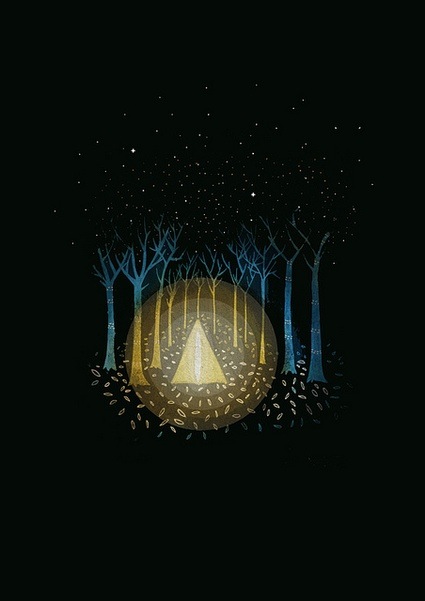 Illustration Matt Saunders. Image courtesy Zoe Papadopoulou
Illustration Matt Saunders. Image courtesy Zoe Papadopoulou
So far, explaining children how babies were made involved quite often storks, cabbages, bees and other fantasies. Science, however, has added new modes of reproductions to the discourse. From in vitro fertilization in the 1970s to today’s research into artificial gametes from stem cells or somatic cells that would allow sperm and eggs to be created from anyone’s cells, regardless of age, gender or sexuality. At the time, New Scientist described the research as ‘male eggs’ and ‘female sperm’.
How will the stories about human reproductions evolve as our methods of reproduction become increasingly more diversified?
Designer Zoe Papadopoulou collaborated with Dr Anna Smajdor, an expert in the ethical aspects of science, on a multidisciplinary project that investigates how scientific and technological developments influence historical stories and narratives, explaining ‘where we come from’. By exploring new reproductive scenarios, this project aims to create the space for a broader discussion on artificial reproductive technologies (ART) that can engage people in the possibilities these advances present.
The work, called Reproductive Futures, is still very much in progress but the first results of the project are on view right now at the Science Gallery in Dublin as part of an exhibition that considers the future of our species. The final outcomes of the project will be a series of books accompanied by objects featured in the narratives.
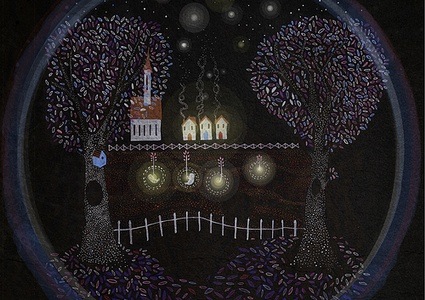 Illustration Matt Saunders. Image courtesy Zoe Papadopoulou
Illustration Matt Saunders. Image courtesy Zoe Papadopoulou
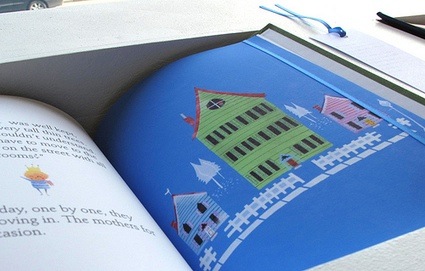 Image courtesy Zoe Papadopoulou
Image courtesy Zoe Papadopoulou
Hello Zoe! Sorry to ask you something so basic but is “artificial reproductive technologies” a different way to say “assisted reproductive technology”? Or are they two different things?
The two terms refer to the same thing – often abbreviated to ‘ART’. They incorporate currently available treatments such as IVF, and treatments in development, as well as future possibilities such as artificial gametes.
Apart from gametes which ART does Reproductive Futures take into account?
There are also a number of different scientific techniques that are being pursued. One involves the creation of gametes from embryonic stem cells; other scientists are working on making sperm from bone marrow stem cells. Another method is ‘haploidisation‘ where a normal body cell is stimulated to become a gamete by splitting and ejecting half of its chromosomes. Work is also underway on induced pluripotential stem cells, where normal body cells are treated with chemicals that stimulate them to behave as though they were embryonic stem cells. It’s not certain which if any of these is likely to succeed first, or which would be safer. One of the interesting ethical questions is about how we establish whether it’s safe or not, without actually allowing it to happen in a human being. Even if it works in animals we can’t be 100% sure – it will be experimental. This is what happened with the first IVF baby, scientists really had no idea what the long term implications would be, so this was very much an experimental procedure.
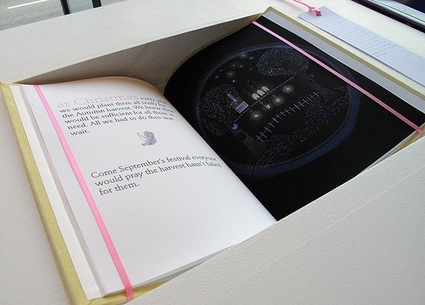 Image courtesy Zoe Papadopoulou
Image courtesy Zoe Papadopoulou
I read a couple of articles about the use of artificial gametes in reproduction that the text on your project page refers to. They date back to 2008 and most of their authors had their doubts about the validity and safety of the technology. Is it still the case? How far away are the “female sperm” and “male eggs” from reality?
Some scientists are very optimistic about how soon this will work. Others are more cautious. When I started researching this about 7 years ago, some scientists were claiming artificial gametes would be available in 5 years. Clearly that hasn’t happened! But often in science, breakthroughs can be unexpected, so I don’t think it’s a question of being able to put an exact timescale on it. What is clear is that scientists in many areas are working on getting cells to change their function. Creating cells that will function as gametes is just one part of this, so it’s not totally cut off from other aspects of research. The ultimate goal is to be able to understand and control all these processes so that any human cell can be reprogrammed to fulfil whatever function we want it to…
The project Reproductive Futures explores “new reproductive scenarios”. Could you take us through some of the scenarios you’ve worked on (i don’t know how many you developed, if talking about all of them is too time-consuming, you could pick just one or 2 of them)?
We are currently showing the work in progress at the Human+ exhibition at the Science Gallery in Dublin, previewing four stories of hypothesized reproductive futures: from genetics (‘multiple biological mothers’ – where more than two people’s DNA is part of fertilization), through to more “practical” near-future scenarios like the possibility of full term gestation in artificial wombs.
We really should mention that ‘Reproductive Futures’ is still in its development phase. We are delighted to have just been awarded a Wellcome Trust Arts Award grant which means the next couple of months will be focus on exploring all the possible opportunities that will arise from ART.
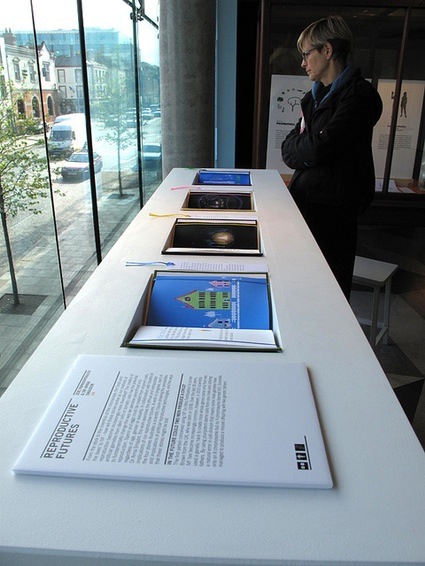 Image courtesy Zoe Papadopoulou
Image courtesy Zoe Papadopoulou
Some ART would bring part of the reproduction into the hands of scientists. There could even be no sexual intercourse involved and therefore, i suspect less taboo or embarrassment in explaining how a baby was born. So does it mean that they will generate narratives that could be completely free from the cabbage and cork-type of “mythology”? Would parents explaining to their kids where they come from be more open about the scientific process than they would be about one that take place in a bed?
That is very possibly right, but perhaps that’s all the more reason why we might need to re-imagine those “mythologies”. Deliberately, the tales you refer to that were once told to children bore no resemblance to how or why conception happened. This ambiguity was embedded by the use of fantasy, and they referred to a world very different to that of children, or of their everyday lives. Fantasy in and of itself has a role to play in this project, yet as developments in science makes the descriptions of ‘how’ and ‘where’ babies come from more complicated, there must be truth and integrity in what we narrate. This project needs to be neither too factual and scientific, nor based on expedient story-telling. It must instead find a way of making understanding both accessible and enjoyable to children and adults.
Thanks Zoe and Anna!
All images courtesy Zoe Papadopoulou.
Check out Reproductive Futures (as well as the Center for PostNatural History) at HUMAN+, an exhibition on view through June 24, 2011 at the Science Gallery in Dublin.
Previous works by Zoe Papadopoulou: The Cloud Project and Knitted Shields.
